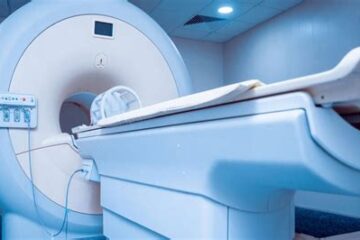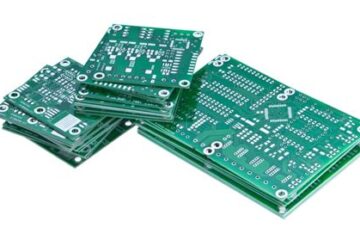Introduction to Rogers and Teflon PCB Materials
Printed Circuit Boards (PCBs) are essential components in modern electronics, providing a platform for mounting and interconnecting electronic components. The choice of PCB material plays a crucial role in determining the performance, reliability, and cost of the final product. Two popular high-performance PCB materials are Rogers and Teflon. In this article, we will explore the differences between these two materials and their applications.
What are Rogers PCB Materials?
Rogers Corporation is a leading manufacturer of high-performance PCB materials. Their products are designed to offer excellent electrical, thermal, and mechanical properties, making them suitable for demanding applications such as high-frequency communications, aerospace, and defense.
Some popular Rogers PCB materials include:
- RO4000 Series: A hydrocarbon ceramic laminate with low Dielectric Constant and dissipation factor, suitable for high-frequency applications.
- RO3000 Series: A ceramic-filled PTFE composite with stable dielectric constant over a wide temperature range, ideal for microwave and millimeter-wave applications.
- RT/duroid Series: A PTFE-based laminate with low dielectric loss, high thermal conductivity, and excellent dimensional stability, used in high-frequency and high-speed digital applications.
What are Teflon PCB Materials?
Teflon, or polytetrafluoroethylene (PTFE), is a synthetic fluoropolymer known for its excellent dielectric properties, chemical resistance, and thermal stability. Teflon PCB materials are widely used in high-frequency, microwave, and RF applications.
Some common Teflon PCB materials include:
- PTFE: Pure Teflon laminate with low dielectric constant and dissipation factor, suitable for high-frequency applications.
- Teflon-ceramic: A composite material combining Teflon and ceramic fillers, offering improved thermal conductivity and dimensional stability.
- Teflon-fiberglass: A reinforced Teflon laminate with enhanced mechanical strength and thermal stability, ideal for high-reliability applications.
Comparing Rogers and Teflon PCB Materials
Dielectric Properties
One of the key differences between Rogers and Teflon PCB materials lies in their dielectric properties. Dielectric constant (Dk) and dissipation factor (Df) are two essential parameters that determine the material’s ability to store and dissipate electrical energy, respectively.
| Material | Dielectric Constant (Dk) | Dissipation Factor (Df) |
|---|---|---|
| Rogers RO4000 | 3.38 – 3.48 | 0.0022 – 0.0037 |
| Rogers RO3000 | 3.00 – 3.50 | 0.0010 – 0.0030 |
| Rogers RT/duroid | 2.20 – 2.90 | 0.0006 – 0.0024 |
| PTFE | 2.00 – 2.30 | 0.0002 – 0.0008 |
| Teflon-ceramic | 2.40 – 3.00 | 0.0010 – 0.0030 |
| Teflon-fiberglass | 2.20 – 2.60 | 0.0015 – 0.0035 |
As evident from the table, Teflon materials generally have lower dielectric constants and dissipation factors compared to Rogers materials. This makes Teflon more suitable for ultra-high-frequency applications where minimal signal loss is critical.
Thermal Properties
Thermal properties, such as thermal conductivity and Coefficient of Thermal Expansion (CTE), are important considerations when selecting a PCB material, especially for applications exposed to varying temperatures.
| Material | Thermal Conductivity (W/mK) | CTE (ppm/°C) |
|---|---|---|
| Rogers RO4000 | 0.60 – 0.70 | 12 – 16 |
| Rogers RO3000 | 0.50 – 0.70 | 17 – 25 |
| Rogers RT/duroid | 0.20 – 0.30 | 24 – 70 |
| PTFE | 0.20 – 0.30 | 100 – 120 |
| Teflon-ceramic | 0.60 – 1.10 | 8 – 20 |
| Teflon-fiberglass | 0.20 – 0.30 | 20 – 50 |
Rogers materials generally have higher thermal conductivity and lower CTE compared to Teflon materials. This makes Rogers PCBs more suitable for applications with high power densities or subjected to thermal cycling, as they can dissipate heat more effectively and maintain dimensional stability.
Mechanical Properties
Mechanical properties, such as flexural strength and tensile strength, determine a PCB material’s ability to withstand physical stress and maintain structural integrity.
| Material | Flexural Strength (MPa) | Tensile Strength (MPa) |
|---|---|---|
| Rogers RO4000 | 240 – 280 | 150 – 200 |
| Rogers RO3000 | 200 – 300 | 100 – 200 |
| Rogers RT/duroid | 20 – 60 | 15 – 40 |
| PTFE | 10 – 20 | 15 – 25 |
| Teflon-ceramic | 20 – 40 | 20 – 40 |
| Teflon-fiberglass | 60 – 100 | 50 – 80 |
Rogers materials, particularly the RO4000 and RO3000 series, exhibit higher flexural and tensile strength compared to Teflon materials. This makes Rogers PCBs more robust and suitable for applications that require mechanical durability.
Applications of Rogers and Teflon PCB Materials
High-Frequency Communications
Both Rogers and Teflon PCB materials find extensive use in high-frequency communication systems, such as:
- 5G networks
- Radar systems
- Satellite communications
- Wireless networking equipment
The low dielectric loss and stable dielectric constant of these materials enable efficient signal transmission and minimal signal distortion at high frequencies.
Aerospace and Defense
Rogers and Teflon PCBs are widely used in aerospace and defense applications due to their excellent performance under extreme conditions. Some examples include:
- Avionics systems
- Missile guidance systems
- Radar antennas
- Satellite components
The high thermal stability, chemical resistance, and mechanical strength of these materials make them suitable for harsh environments encountered in aerospace and defense applications.
Medical Equipment
High-performance PCB materials like Rogers and Teflon are used in medical equipment that requires reliable operation and minimal signal interference. Examples include:
- MRI machines
- X-ray systems
- Patient monitoring devices
- Surgical equipment
The low dielectric loss and stable dielectric properties of these materials ensure accurate signal transmission and reception, which is critical in medical applications.

FAQs
1. Can I use Rogers or Teflon PCBs for low-frequency applications?
While Rogers and Teflon PCBs excel in high-frequency applications, they can also be used for low-frequency designs. However, their higher cost compared to standard PCB materials like FR-4 may not justify their use in low-frequency applications unless there are specific requirements for thermal stability or chemical resistance.
2. How do I select between Rogers and Teflon PCB materials for my application?
The choice between Rogers and Teflon PCB materials depends on your specific application requirements. Consider factors such as the operating frequency, required dielectric properties, thermal management needs, mechanical stress, and budget constraints. Consult with a PCB manufacturer or material supplier to determine the most suitable material for your application.
3. Are Rogers and Teflon PCBs more expensive than standard PCB materials?
Yes, Rogers and Teflon PCB materials are generally more expensive than standard PCB materials like FR-4. This is due to their superior dielectric, thermal, and mechanical properties, as well as the specialized manufacturing processes required to fabricate PCBs using these materials.
4. Can I mix Rogers and Teflon materials on the same PCB?
While it is possible to mix Rogers and Teflon materials on the same PCB, it is not a common practice. Mixing different materials can lead to challenges in manufacturing, such as uneven thermal expansion and difficulties in bonding. If your application requires the use of multiple high-performance materials, consult with a PCB manufacturer to ensure compatibility and feasibility.
5. How do I ensure proper handling and processing of Rogers and Teflon PCBs?
Rogers and Teflon PCBs require special handling and processing techniques to maintain their superior properties. Some key considerations include:
- Proper storage to avoid moisture absorption
- Use of compatible adhesives and solders
- Controlled lamination and curing processes
- Specialized drilling and machining techniques
Work closely with a PCB manufacturer experienced in handling high-performance materials to ensure the best results.
Conclusion
Rogers and Teflon PCB materials offer superior dielectric, thermal, and mechanical properties compared to standard PCB materials. While both materials are suitable for high-frequency and demanding applications, they differ in their specific properties and applications.
Rogers materials generally have higher dielectric constants, higher thermal conductivity, and better mechanical strength, making them suitable for applications with high power densities and thermal cycling. Teflon materials, on the other hand, have lower dielectric constants and dissipation factors, making them ideal for ultra-high-frequency applications with minimal signal loss.
When selecting between Rogers and Teflon PCB materials, consider your application’s specific requirements, such as operating frequency, thermal management, mechanical stress, and budget constraints. Consult with a PCB manufacturer or material supplier to determine the most suitable material for your application.
As technology advances and new applications emerge, the demand for high-performance PCB materials like Rogers and Teflon will continue to grow. By understanding the differences between these materials and their applications, designers and engineers can make informed decisions when developing cutting-edge electronic devices.



0 Comments